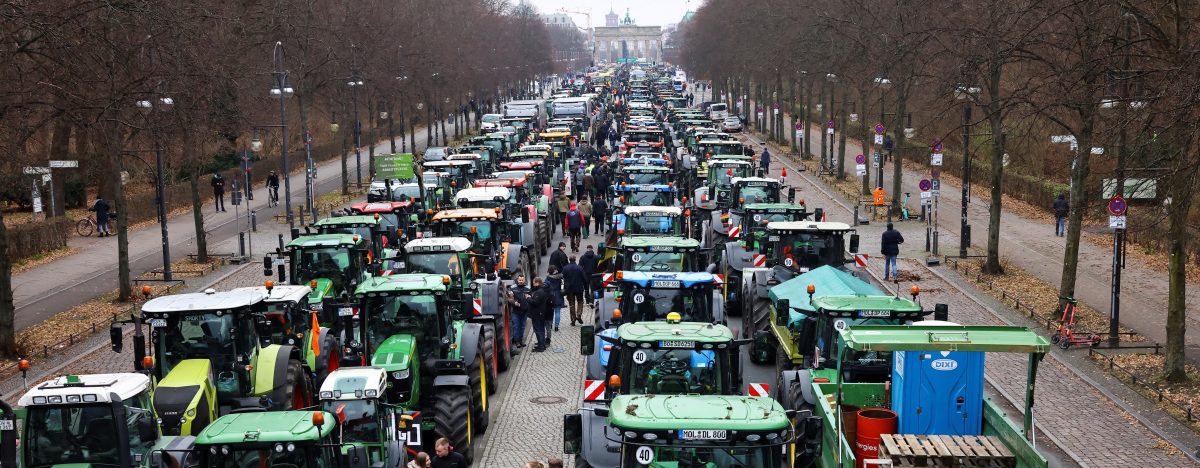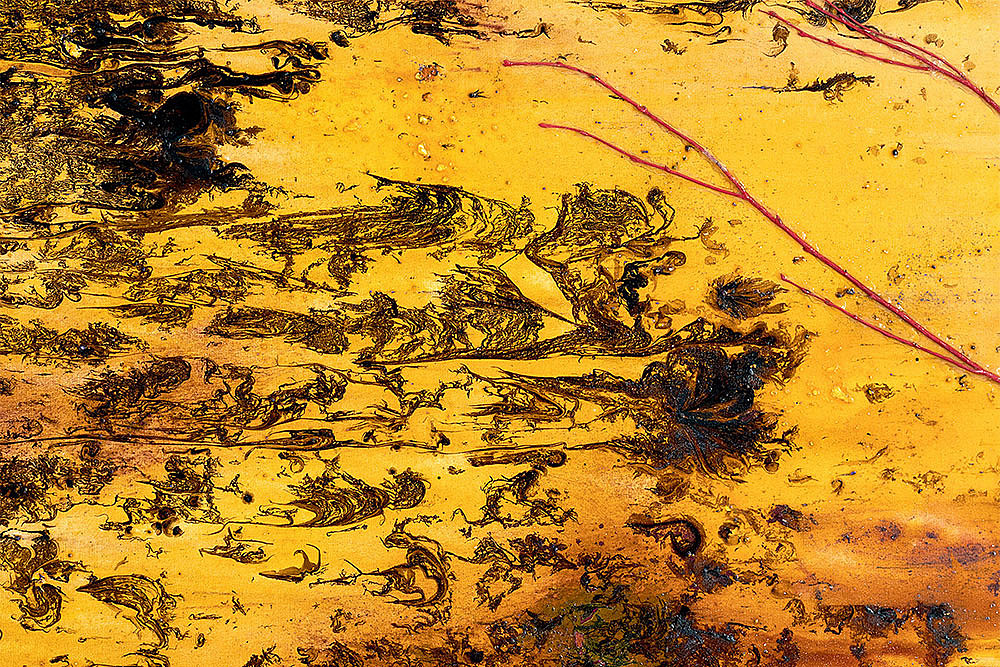Five months into Israel’s genocidal campaign against the Palestinian people – a compendium of colonial violence, from the bombing of maternity wards to what Raphael Lemkin once called ‘racial discrimination in feeding’ – there has been no shortage of critical commentary. Diaspora intellectuals have worked tirelessly to counter Zionist hasbara; yet when Palestinians are called upon, it is usually to bear witness to brutality and dispossession, not to give their political prescriptions. Haidar Eid’s Decolonising the Palestinian Mind, published late last year, is a vital intervention in this regard. The book sets out to revive the politics of Palestinian liberation by articulating a transformative anti-colonial praxis that would break with sundry ‘peace initiatives’ while redrawing ‘the (cognitive) political map of post-Oslo Palestine’.
Eid teaches English literature at Gaza’s al-Aqsa University and is a founding member of the BDS movement. He is the author of ‘Worlding’ Postmodernism (2014), a plea for an anti-authoritarian critical theory of totality anchored in readings of Joyce and DeLillo, as well as the editor of Countering the Palestinian Nakba (2017), a collection of writings by American, Israeli and Palestinian intellectuals which makes the case for one secular democratic state. As part of the systematic scholasticide visited upon the Strip – an intensification of Israel’s decades-long war on Palestinian intellectual life – Eid’s university has now been obliterated along with all other higher education institutions in Gaza. Scores of its academics and students have been murdered; all have been displaced and are now facing famine.
Decolonising the Palestinian Mind was completed amid Israel’s current onslaught, which Eid and his family were eventually able to escape because of his South African citizenship. A prologue, dated 26 October, captures the scale and ubiquity of the destruction: ‘I am standing over the ruins of a house in Gaza City, peering at the horizon. Most probably, the body of a martyr lies under the rubble. The body of someone who could not respond to an Israeli “warning.”’ In a poetic ‘out of body’ meditation, Eid surveys the pulverized landscape as if from the standpoint of a ghost. A further prologue, composed in Rafah five days later, describes his efforts to evade Israeli bombs with his wife and young children, fleeing from the razed Gaza City neighbourhood of Rimal to the north of the Strip and then down to the border with Egypt. It concludes by reiterating the demands for a ceasefire and ‘immediate reparations and compensation’, as well as one democratic state.
Though informed by Eid’s experience of living between bombing and blockade, the book is not a testimonial. It is an attempt to carry forward the intellectual project of the late Edward Said, taking cues from his intransigent criticisms of the Oslo ‘peace process’ along with his warnings about a statehood bereft of sovereignty and delinked from decolonization. Oslo, writes Eid, has become a seemingly untranscendable horizon for Palestinian politics, both in spite of and because of its manifest failure. Its framework has segmented the Palestinian population – the refugee diaspora, those living under distinct occupation regimes in Gaza and the West Bank, and the second-class Palestinian citizens of Israel – and created a fractured ‘Bantustan endorsed by the international community’. Gaza, Eid writes, is now ‘the mirror image of Oslo’: both the enabling condition of the current disaster and the true face of a peace process that promised coexistence but never countenanced justice or repair. As Eid reminds us, ‘75-80 percent of Gazans are refugees whose right to return is guaranteed under international law, a right that has been totally ignored by Oslo’. In his account, the ‘invasion and siege of Gaza was a product of Oslo. Before the Oslo Accords were signed, Israel never used its full arsenal of F-16s, phosphorous bombs, and DIME weapons to attack refugee camps in Gaza and the West Bank.’
‘Oslo’ names a form of false consciousness that afflicts Palestine’s ‘assimilated intelligentsia’ and political elites, who have been defanged, coopted, NGOised and corrupted by the apparatus bequeathed by the Accords. Neither the residual left nor the Islamist resistance has managed to break out of this iron cage. Even Hamas, with its proposal for a ‘long-term truce’ (hudna) based on 1967 borders, has succumbed to it. For Eid, this two-statism – ‘the opium of the Palestinian people’ – cannot challenge the logic of Israeli apartheid, since it implies the reduction of ‘Palestine’ to the current inhabitants of territories occupied and besieged by Israel. It effectively endorses ‘racist ideas about the separation of peoples’, when the sine qua non of liberation should be to reunify the Palestinian people that Zionism has divided by design.
Said’s legacy looms large in this effort to extricate Palestinian politics from the Oslo Accords. Eid reviews the great critic’s dissection of the so-called peace process, from 1993 until his death in 2003, and seconds his conclusion that ‘no negotiations are better than the endless concessions that simply prolong the Israeli occupation’. Looking back on the Accords, Eid asks whether
we have been forced to endure horrible massacres, a genocidal siege, the unstoppable annexation of our land, the building of an apartheid wall, detention of entire families and children, demolition of hundreds of homes, and many other abuses only because a comprador class saw ‘independence’ at the end of a closed tunnel!?
A return to the anti-colonial tradition of Said, Césaire, Fanon and Biko is necessary to counter a Palestinian ‘neo-nationalism’ which ‘beautifies occupation, endorses normalisation, and defends the racist two-state solution’, regardless of the fact that it ‘denies the rights of two-thirds of the Palestinian people, namely refugees and Palestinian citizens of Israel’. By tacitly accepting the existence of Israel as a Jewish state and coordinating with its repressive apparatuses, writes Eid, this neo-nationalist ideology has become a partner of the Zionist project. Its only ‘solution’ is to give a circumscribed political class the trappings of statehood (flag, anthem, police force) and delegated power over a fragmented population. This means denying the existence of the Palestinian people as a people, and reducing Palestine to the status of a governable or ungovernable enclave. Statehood, thus conceived, is tantamount to surrender. At most, such a state would grant the Palestinians notional ‘autonomy’ on 22% of their land, with no control over their borders or water reserves, no right of return, and no defence against Israel’s military juggernaut.
Eid also engages with Said to diagnose the impasse of the political class in the West Bank and Gaza. He denounces the decision to build a representative structure under Bantustan conditions in the 1996 Legislative Council elections, and describes the 2006 elections both as a repudiation of the political logic of Bantustanisation and an implantation of the ‘Oslo Virus’ – even among a victorious Hamas. After 2006, Eid claims, Hamas played the role of ‘prison sergeant’ in Gaza: applying illegitimate religious laws while appealing to the US on the basis of a sui generis two-statism. Eid does not address how this détente of sorts was destroyed on 7 October, nor the gestation of this operation during the years of apparent containment. Yet his assessment of Hamas’s government prior to that date is bleak:
Day by day, we have seen this authority shift from the stage of resistance to the siege, to coexisting with it and finally reaching a stage of taking advantage of it. It has created a new, unproductive, rentier class whose capital is based on trade in the tunnels (before their destruction by the Egyptian authorities), land trading, a monopoly on the marketing of building materials, etc. This went hand in hand with a monopoly on the definition of resistance, excluding the possibility of reconciliation with those who do not follow its ideology.
Eid dwells in particular on Hamas’s inability to capitalize on the Palestinian unity and international solidarity in the wake of the 2008-9 war (Operation Cast Lead for Israel; the Battle of al-Furqan for Hamas). Like its predecessors and sequels, the Israeli assault was intended to create a sense among Palestinians ‘that they are confronted with a metaphysical power that can never be defeated’. Yet Israel failed to break the spirit or the substance of resistance, declaring a unilateral ceasefire after killing 1,400 Palestinians and destroying swathes of Gaza. What followed was, in Eid’s view, an ‘abortion of victory’, marked by futile efforts to broker a national unity government between Hamas and Fatah and fruitless engagement with the US, fuelled by false hopes in the Obama administration. This demonstrated that Hamas had embraced the statehood fetish, reinventing the broken wheel of ‘independence’ rather than leading a popular emancipation struggle.
Eid stresses the need for a different path to liberation – one ‘that makes the de-Osloization of Palestine its first priority’ and ‘divorces itself from the fiction of the two-state or two-prison solution’. His proposal is to disengage from the political structures of Palestinian governance, breaking with both the religious right (Hamas) and the secular right (Fatah), whose main priority, he argues, is their own political existence. Eid’s programme involves dismantling the PA along with the ‘classical national programme’ of the Palestinian bourgeoisie, and working towards the formation of ‘a United Front on a platform of resistance and reforms’ through the reconstitution of the Palestinian National Council (PNC). Eid draws on Paulo Freire’s concept of ‘untested feasibility’ (inédito viável), which claims that the oppressed can use ‘limit situations’ to develop critical practices with the potential to transform ‘hostile conditions into a space for creative experimentation of freedom, equality, and justice’. This may sound utopian given the intense hostility of conditions in Gaza today. But as imperial powers begin to rehearse ‘solutions’ for the day after the genocide, alternatives may amount to a permanent denial of Palestinian freedom.
What of the Palestinian left? Much of it is materially integrated into the subaltern economy of Palestinian political representation: ‘Most members of the political bureaus of the major left parties are either directly employed by the PA/PLO or get paid monthly salaries without being directly employed.’ Eid claims that the PFLP, DFLP and People’s Party have failed to mount an effective challenge to the authoritarian drift of the PLO and PA. He therefore argues that the left must be rebuilt outside the existing Palestinian political system, drawing on the grassroots mobilizations against the ethnic cleansing of the Negev Bedouin, the Unity Intifada and the resistance to the evictions in Sheikh Jarrah. The principles of this movement must include a firm repudiation of two-statism; support for international solidarity and boycott campaigns; unity among Palestinians from Gaza, the West Bank and the diaspora; a rejection of neoliberalism and revitalization of the PNC; and a willingness to learn lessons from both the Latin American left and the South African anti-apartheid struggle. All this would require not just a different politics, but a new cognitive mapping that ‘challenges the space newly drawn by the US, Israel, and their Arab allies – the so-called new Middle East’, and instead posits a ‘secular-democratic Palestine in the heart of a democratic Arab world’. In other words, it would require an abandonment of the fatal conceit that one can repair the legacy of partition by repeating its foundational premises.
Eid’s intervention is valuable for its urgency of purpose and openness of outlook. Its proposals are especially resonant as the spectre of statehood hovers over the rubble of Gaza. Yet it is worth recalling that international law, invoked by Eid to underscore the injustice and criminality of apartheid, operates with statehood as its frame. A two-state vision sets the terms of juridical affirmations of Palestinian freedom, as seen in the ICJ cases challenging the legality of Israel’s occupation and seeking to apply the Genocide Convention to the current war. One of the key challenges for any alternative Palestinian political programme will be to navigate an international legal order which provides one of the only arenas for the legitimized assertion of rights while also leaving such claims prone to capture and domestication by hostile powers, above all the United States.
As for Eid’s view of ‘one democratic state’ as the lodestar for Palestinian liberation, it goes without saying that this will come up against the imposing obstacles of the imperial system. It will also be confronted by the overwhelming commitment of Israeli Jews to the Zionist logic of elimination and domination, which has only been hardened by recent events. Eid echoes Césaire’s universalist refrain, ‘there’s room for everyone at the rendezvous of victory’; but what rendezvous, or even tolerable coexistence, can be imagined with those who have rallied en masse to a war promoted and prosecuted in explicitly exterminist terms? Even if we keep faith in the most utopian of visions, it is hard to avoid the sense that transitional arrangements will be required: perhaps some variant of the blueprint laid out by the Moroccan Jewish Marxist Abraham Serfaty in his prison writings on Palestine, where he argued for the establishment of two states, a ‘de-Zionised’ secular Israel under ‘one person one vote’ principles, and an ‘Arab’ Palestinian nation, as an interim solution.
Who is capable of pursuing such a vision – one that, to quote Eid’s final line, could ‘turn the whole hegemonic picture upside down’? While Eid is forceful in criticizing the organized formations on both the left and right, and in centering grassroots cadres and the BDS movement, he is less clear on the role of armed resistance. There is little discussion of the armed wings of the various parties and factions (which have not always cleaved to the positions of their political leaderships), or of the popular resistance fronts that emerged in the First and Second Intifadas and which continue to operate in various defensive guises, most prominently in Jenin. Eid formulated his view of Hamas as ‘prison sergeant’ before 7 October, but it is not easy to square with Tufan Al-Aqsa – an attack which seemed like a deliberately irrevocable undoing of the status quo ante. It is also worth registering, contra Eid’s critique of left-wing collaboration with the PA, that the PFLP has recently joined forces with Hamas, Palestinian Islamic Jihad and the Palestinian National Initiative to denounce Abbas’s appointment of a new ‘technocratic’ PM, Muhammad Mustafa. Still, it is to Eid’s credit that at perhaps the bleakest and certainly the most murderous moment in Palestinian history, he has had the intellectual courage not just to break with conceptions of peace pregnant with the disasters of war, but to affirm an expansive anti-colonial vision of liberation.
Read on: Alexander Zevin, ‘Gaza and New York’, NLR 144.









